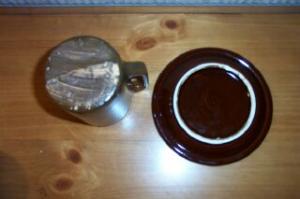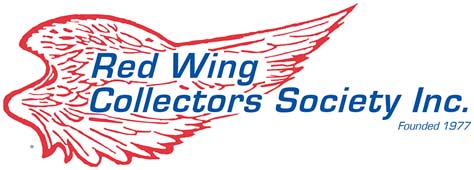There may be a RWCS Chapter near you
Learn more on our Chapters Page.
Membership is only $35 a year and includes six full-color newsletters and exclusive, members only, online content
Question:
 I have a set of 26 pieces from an estate sale. The pitcher is marked Red Wing and I found it to be Provencial Oomph. The rest are a covered casserole, 8 dinner plates, 8 dessert plates, and 8 mugs. None of these are marked. Are they RW?
I have a set of 26 pieces from an estate sale. The pitcher is marked Red Wing and I found it to be Provencial Oomph. The rest are a covered casserole, 8 dinner plates, 8 dessert plates, and 8 mugs. None of these are marked. Are they RW?
Answer: I can address only the two items shown in the photo included here. The mug on the left is not Red Wing. The item on the right appears to be the underside of a Red Wing Bakeware (aka Oomph) plate. The other pieces may or may not be Red Wing; I’d need to see a photo of them to verify.
Red Wing introduced the pattern commonly known as Oomph in 1943. The correct name for this pattern is Bakeware, but it became known as Oomph due to the prominence of that word on an early brochure.
People routinely mixed and matched Bakeware pieces with similar green and brown pieces from other potteries such as Louisville. In 1951 Red Wing introduced Village Green, which also was made in green and brown colors. The Red Wing patterns usually have a clearly defined line between the green and the brown, while other potteries often dripped or ran the colors into each other. Also, the green color from other potteries often has more of a blue hue than Red Wing’s.
Larry
